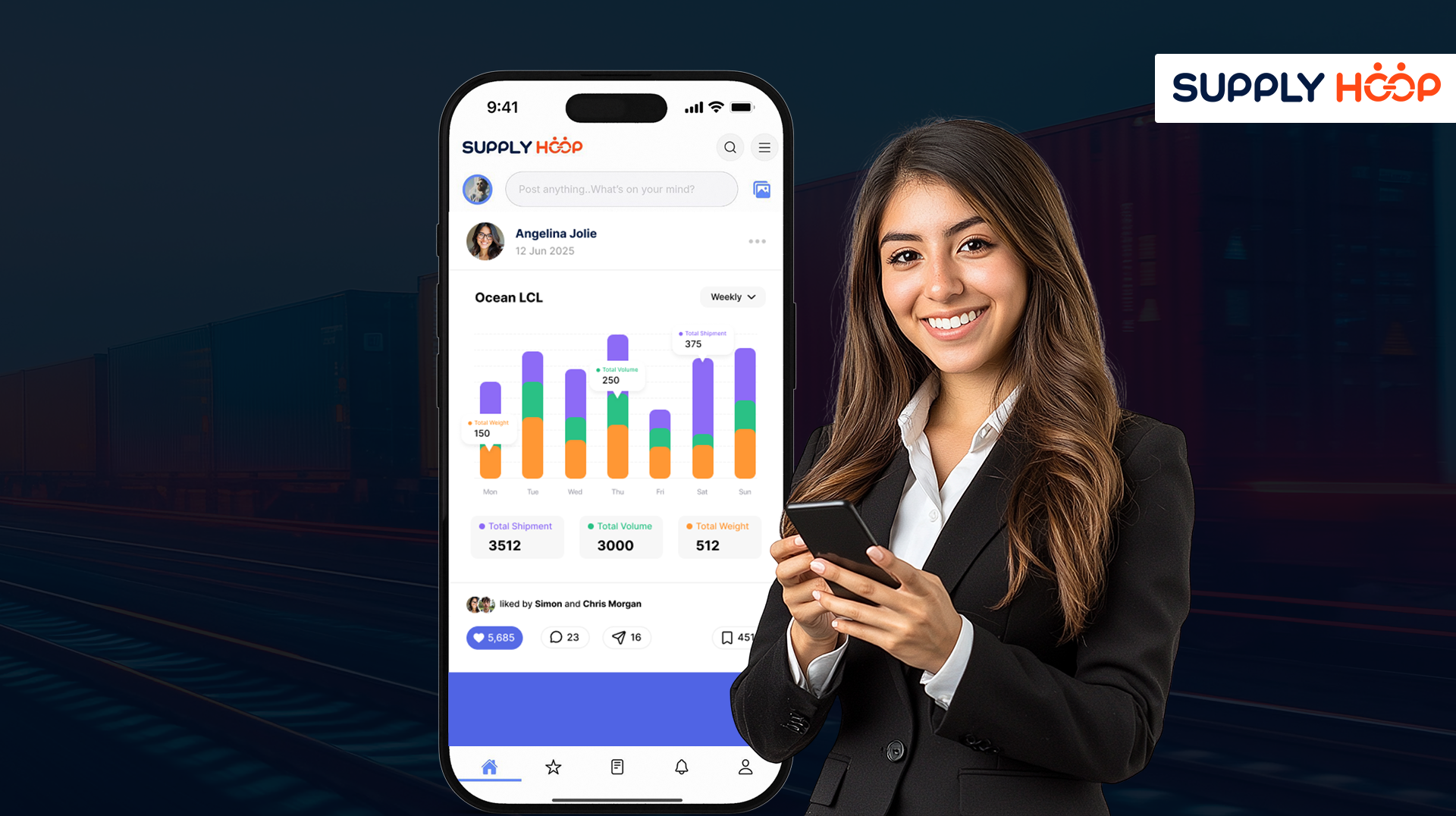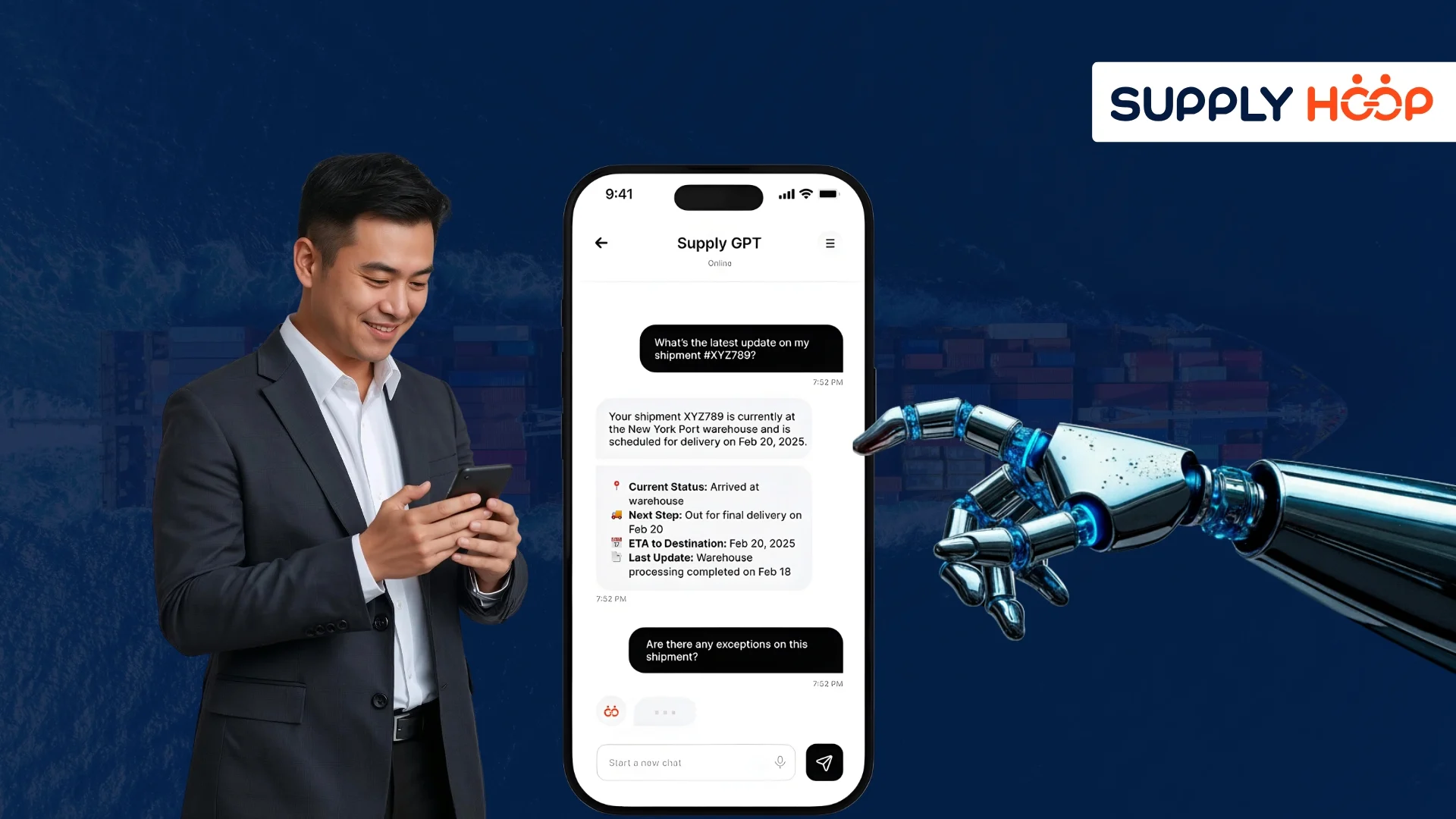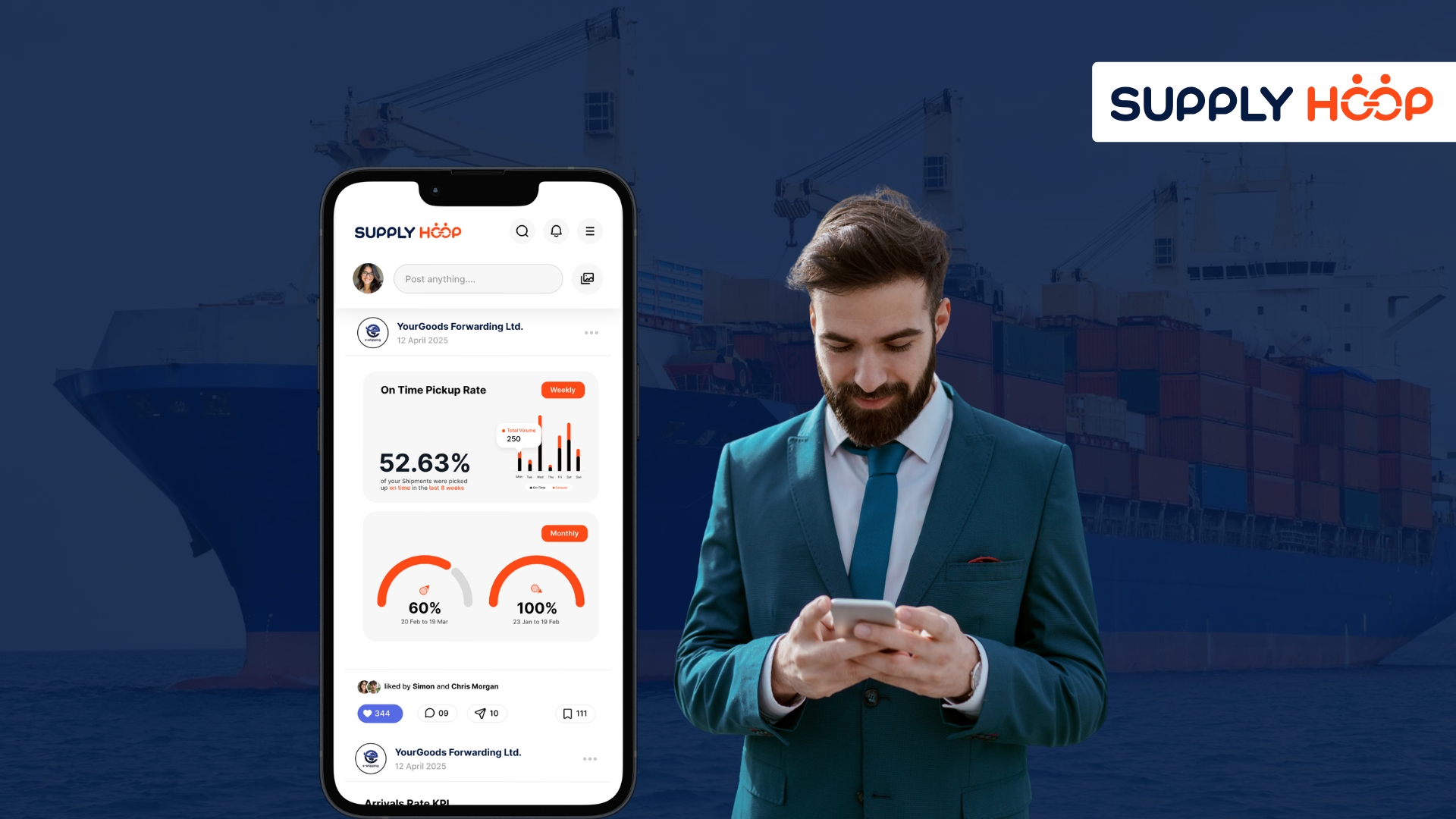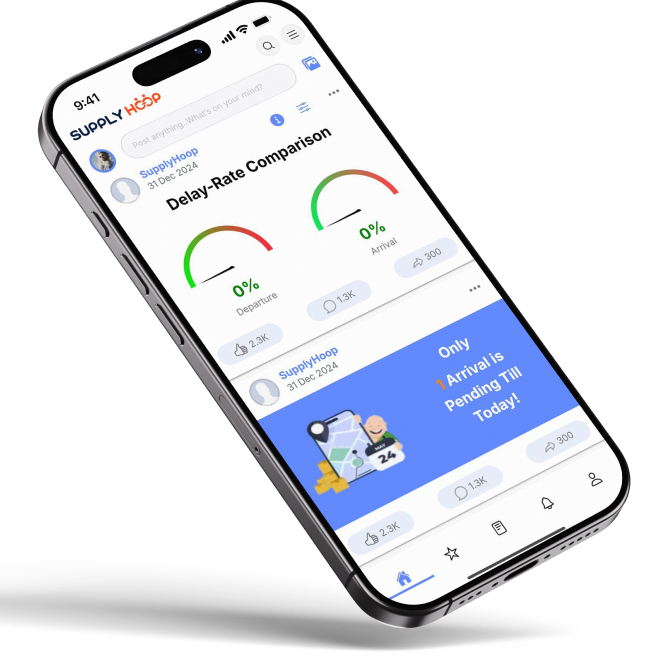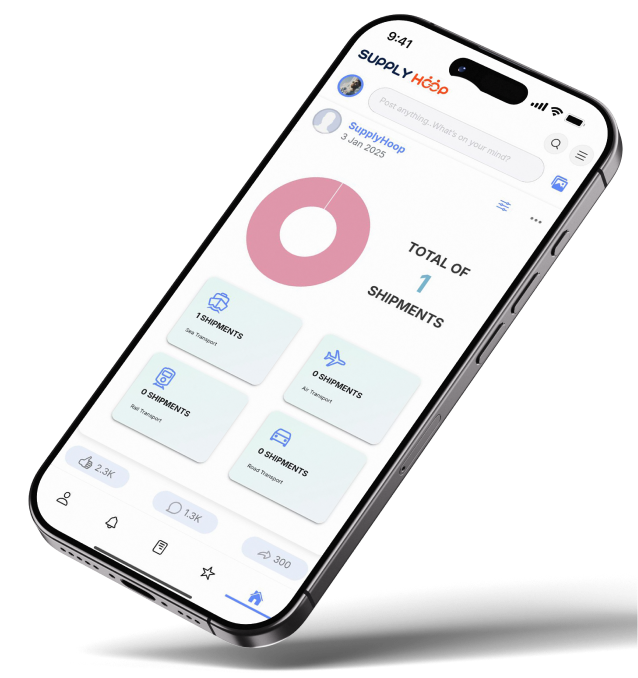Not every shipment fills a 40-foot container—and that’s okay. If you’ve got a few pallets of goods that need to get moving overseas, you’re likely shipping LCL.
But just because the load is smaller doesn’t mean the logistics are simpler. In fact, Less than Container Load (LCL) shipments often come with more coordination, more documentation, and more chances for delays, especially if you’re not able to see where things stand in real time.
That’s where Supply Hoop steps in. Our mobile app for supply chain visibility helps you track your LCL shipments across consolidation points, freight stations, and customs checkpoints, all from your phone, all synced with CargoWise and other logistics ERPs.
What is LCL Shipping?
LCL, or Less than Container Load, refers to ocean freight shipments that don’t take up an entire container. Instead, your cargo is consolidated with other shipments headed to the same destination.
Here’s how it works:
- Your goods are packed and sent to a CFS (Container Freight Station).
- They’re consolidated with other shipments into a shared container.
- At the destination, everything is de-consolidated, and your freight is delivered.
How Much Does LCL Cost?
LCL rates are usually calculated by volume, measured in CBM (Cubic Meters). Here’s what typically affects your cost:
- Volume: The more space your cargo takes up, the more you pay.
- Weight: Rarely a factor unless you’re shipping super-heavy goods.
- Handling fees: At both origin and destination freight stations (CFS).
- Pickup and delivery: First-mile and last-mile trucking.
- Customs and documentation: Bonds, duties, and taxes.
The minimum chargeable volume for LCL is 1 CBM, so even if your cargo is smaller, you’ll still pay for that space.
Why Choose LCL Over FCL or Air Freight?
Here’s a quick comparison:
| Mode | Best For | Pros | Cons |
| LCL | Small shipments (1–12 CBM) | Lower cost than air freight; frequent sailings | More handling; longer transit time |
| FCL | Shipments over 13–14 CBM | Lower cost per CBM; less damage risk | Must pay for full container space |
| Air | Urgent or light shipments | Fastest option | High cost; weight-based pricing |
If your load is under 10 CBM, LCL is usually your best bet. But once you hit that tipping point (around 13–14 CBM), FCL becomes more cost-efficient.
Real-Time LCL Visibility With Supply Hoop
Once your LCL shipment leaves the factory, it often passes through 5–7 different checkpoints before reaching its destination. Here’s what you can track in the app:
- Consolidation and stuffing updates at the origin CFS
- Live container location via GPS during ocean transit
- ETD, ETA, ATD, ATA timestamps and updates
- Last-mile delivery tracking
- Instant alerts for delays, customs holds, or documentation issues
- Performance KPIs: transit times, delay rate, milestone completion
All this data is automatically synced with CargoWise, so you and your team stay updated without extra clicks.
What’s Unique About LCL Tracking in Supply Hoop?
- Grouped Shipment View: See all your LCLs in one view, sorted by route, client, or destination.
- Integrated Docs: Download BLs, invoices, packing lists, and customs forms on the fly.
- SupplyGPT AI: Simply ask about shipments, tracking, exceptions, ETA/ETD, ATA/ATD, or any other logistics data, and it will instantly provide accurate answers. and get instant replies.
- Milestone Notifications: Know when your goods leave the CFS, arrive at port, clear customs, or get delivered.
Additional Fees to Watch Out For in LCL
Let’s be real, LCL is affordable, but not fee-free. Here are some common charges to expect:
- Labeling and palletization
- Warehouse appointment fees
- Customs bond (single entry or annual)
- Duties and taxes (based on product HS code)
- Waiting or handling charges during consolidation or delivery
Supply Hoop helps you stay on top of these by providing:
- Estimated cost breakdowns
- Timeline alerts to avoid demurrage/detention
- Smart alerts for document requirements or customs red flags
When Should You Use LCL?
Choose LCL when:
- You’re shipping under 13 CBM
- Your delivery timeline is flexible
- You’re consolidating shipments from multiple suppliers
- You want to save money over air freight
Don’t choose LCL if:
- You’re in a rush
- Your shipment is fragile and high-risk
- You’re close to the FCL break-even point
Conclusion
Shipping LCL can save you money, but it doesn’t have to cost you visibility. With Supply Hoop, you can track, manage, and optimize your LCL shipments anywhere, anytime, with real-time data and no information gaps.
From the moment your goods are consolidated to the final mile, our mobile app keeps you in control, no matter how small the shipment.
Ready to simplify your LCL shipments with a mobile-based solution? Book a demo of Supply Hoop and discover how easy logistics can be, one CBM at a time.
